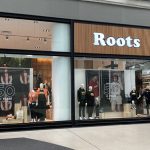Retail sales increased during August as consumer demand outweighed the pandemic, supply chain disruptions and other factors affecting spending, the National Retail Federation said.
“The increase in August retail sales reflects the continued strength of the American consumer and the resilience of our nation’s retailers,” NRF President and CEO Matthew Shay said. “In spite of the ongoing challenges of the global pandemic, concerns about the delta variant, and supply chain and workforce constraints, the retail industry continues to do what it does best—serve customers and support communities while keeping team members and associates safe and healthy. We maintain our confidence in the historic strength of consumers and fully expect a record year for retail sales and a strong holiday season for retailers.”
“Retail sales in August overcame unusual twists and turns that have affected shopping behavior both in terms of the timing and composition of sales,” NRF Chief Economist Jack Kleinhenz said. “The consumer remains rock solid despite the trifecta of macroeconomic headwinds we’ve seen this year, including tapering off of government stimulus, elevated COVID-19 infections and ongoing supply chain challenges in the form of shortages of labor and goods. Higher sales came even with a disjointed back-to-school season that also affected the timing of sales as many school districts returned to in-person learning but some delayed classes until after Labor Day. These results pave the way for sturdy consumer spending and a strong economy in the fourth quarter.”
The U.S. Census Bureau said overall retail sales in August were up 0.7 percent seasonally adjusted from July and up 15.1 percent year-over-year. That compares with a decline of 1.8 percent month-over-month and an increase of 15.1 percent year-over-year in July. Despite occasional month-over-month declines, sales have grown year-over-year every month since June 2020, according to Census data.
NRF’s calculation of retail sales, which excludes automobile dealers, gasoline stations and restaurants to focus on core retail, showed August was up 2.3 percent seasonally adjusted from July and up 12 percent unadjusted year-over-year. That compared with a month-over-month decrease of 1.8 percent and a year-over-year increase of 8.9 percent in July. NRF’s numbers were up 11.4 percent unadjusted year-over-year on a three-month moving average.
For the first eight months of the year, sales, as calculated by NRF, were up 15 percent over the same period in 2020. That is consistent with NRF’s revised forecast that 2021 retail sales should grow between 10.5 and 13.5 percent over 2020 to between $4.44 trillion and $4.56 trillion.
August sales were up in all but two categories on a monthly basis and up across the board year-over-year, led by increases at clothing, sporting goods and electronics stores. Specifics from key sectors include:
- Clothing and clothing accessory stores were up 0.1 percent month-over-month seasonally adjusted and up 36.6 percent unadjusted year-over-year;
- Sporting goods stores were down 2.7 percent month-over-month seasonally adjusted but up 20.3 percent unadjusted year-over-year;
- Electronics and appliance stores were down 3.1 percent month-over-month seasonally adjusted but up 18 percent unadjusted year-over-year;
- Furniture and home furnishings stores were up 3.7 percent month-over-month seasonally adjusted and up 16.1 percent unadjusted year-over-year;
- General merchandise stores were up 3.5 percent month-over-month seasonally adjusted and up 13.6 percent unadjusted year-over-year;
- Health and personal care stores were up 0.2 percent month-over-month seasonally adjusted and up 10.6 percent unadjusted year-over-year;
- Online and other non-store sales were up 5.3 percent month-over-month seasonally adjusted and up 10.6 percent unadjusted year-over-year;
- Building materials and garden supply stores were up 0.9 percent month-over-month seasonally adjusted and up 8.8 percent unadjusted year-over-year; and
- Grocery and beverage stores were up 1.8 percent month-over-month seasonally adjusted and up 4.8 percent unadjusted year-over-year.
Photo courtesy Mango/Shutterstock












